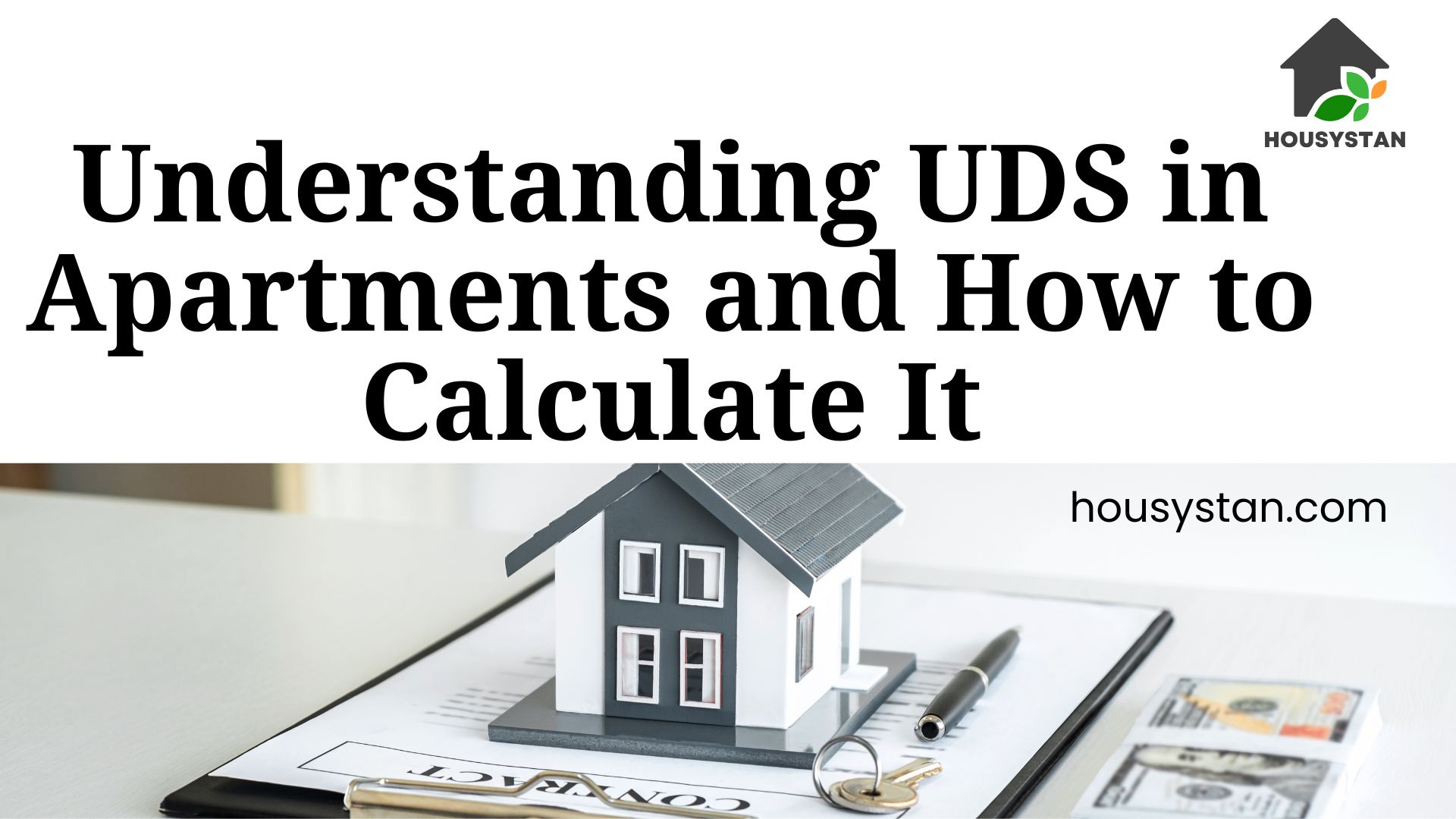Understanding UDS in Apartments and How to Calculate It
Read latest blogs and articles from Housystan

The Information mentioned here was last updated on:
21/12/2025Understanding UDS in Apartments: An Essential Guide
In the world of real estate, especially when it comes to purchasing an apartment, understanding the concept of UDS—short for Undivided Share of Land—is crucial. This essential element plays a significant role in determining the value and ownership aspects of any apartment. However, it's often shrouded in mystery for homebuyers who are new to the real estate market. This guide aims to demystify UDS and provide a straightforward understanding of how it impacts your apartment purchase.
What is UDS?
- Verified Tenants/Buyers
- Unlimited Property Listing
- Zero subscription/charges fee
UDS, or Undivided Share of Land, refers to each apartment owner's portion of the land on which the entire apartment complex is built. When you purchase an apartment, you acquire two things: the physical structure of your dwelling and a share in the underlying land. This share is undivided because it is not physically apportioned or marked out within the land. Instead, you own a percentage of the land, calculated based on the size of your apartment concerning the total built-up area of all apartments in the complex.
Why UDS is Important
Understanding UDS is vital because land typically appreciates over time, while buildings depreciate. Owning a higher percentage of the land can significantly increase the value of your investment. UDS is also crucial for determining your stake in shared spaces and facilities, influencing both maintenance costs and any compensation if the property is redeveloped or sold in the future.
How UDS Affects Property Value
The primary value of a property is often tied to the land it sits on. Over the years, land values generally rise due to scarcity, location development, and demand. Hence, a higher UDS implies that you hold a larger portion of this appreciating asset. In scenarios like redevelopment or a collective sale, your compensation or stakeholder input is determined by your UDS. Thus, ensuring a substantial UDS in your apartment can lead to better financial returns in the long run.
Calculating UDS: A Simple Approach
Calculating your UDS might seem daunting, but it’s relatively straightforward if you understand the basics. The formula involves determining the proportion of your apartment's super built-up area against the total super built-up area of all apartments.
Step-by-step Calculation:
1. Determine Your Apartment’s Built-up Area: Start by identifying the super built-up area of your apartment. This includes the carpet area (the actual space within the walls of your apartment), plus a proportionate share of common areas like corridors, lobbies, and amenities.
2. Calculate the Total Built-up Area: Find out the total super built-up area of the entire apartment complex. This is usually available in the project’s official documents.
3. Compute Your UDS:
\[
\text{Your UDS} = \left( \frac{\text{Your Apartment's Built-up Area}}{\text{Total Built-up Area of the Complex}} \right) \times \text{Total Land Area}
\]
This formula yields the portion of land in square feet that you own.
Factors Influencing UDS
Several factors can influence the percentage of UDS you receive:
- Flat Size: Larger apartments generally come with a proportionately larger UDS.
- Number of Apartments in the Building: More units mean the land gets divided into smaller chunks, potentially reducing individual UDS.
- Location and Legal Norms: Local regulations and zoning laws might affect how UDS is distributed within a condominium.
UDS and Legal Aspects
Understanding the legal implications of UDS is crucial before finalizing any real estate transaction. Compliance with local property laws, clear title deeds, and awareness of regulations governing UDS are essential to ensure that your ownership is secure and undisputed. While the UDS concept might vary slightly globally, the underlying principle remains consistent—it's about securing your rightful share in land ownership.
Common Misconceptions About UDS
Several misconceptions surround UDS, which may confuse prospective buyers. Let's address a couple of these misunderstandings:
1. UDS Equals Carpet Area: This isn't true. The UDS typically includes a share of the common areas and often exceeds the actual interior space of your apartment.
2. All Apartments Have Equal UDS: UDS varies with the size of your apartment and the total built-up area. Larger flats generally come with a higher UDS.
3. UDS Can be Sold Separately: UDS is intrinsically linked to the apartment and cannot be sold separately without selling the apartment itself.
Understanding these points can help in making more informed decisions regarding property purchases.
UDS in Redevelopment Scenarios
In the event of redevelopment, the existing building is demolished for new construction on the same land. This is where your UDS becomes extremely significant. Developers typically offer new apartments to existing owners based on their UDS. Alternatively, compensation or benefits are often proportionate to the UDS held by each apartment owner. Thus, having a clear and substantial UDS ensures that you remain a key stakeholder during such projects.
Things to Check About UDS Before Buying
Before signing on the dotted line for a new apartment, ensure you check the following about the UDS being offered:
- Clear Title Deed: Ensure the title document clearly specifies the UDS you will own.
- Adherence to Local Laws: Verify with a legal expert that the UDS allocation complies with local regulations.
- Builder’s Reputation: Research the builder's track record, as reputable developers are more likely to offer fair UDS allocation.
Arming yourself with this knowledge can provide peace of mind and secure your investment's future value.
By thoroughly grasping the nuts and bolts of Undivided Share of Land, you're better prepared to make informed choices in the real estate market. This understanding not only aids in calculating the exact value of an apartment but also ensures transparency and fairness in property transactions. Understanding and leveraging UDS could be your key to a sound and profitable real estate investment journey.